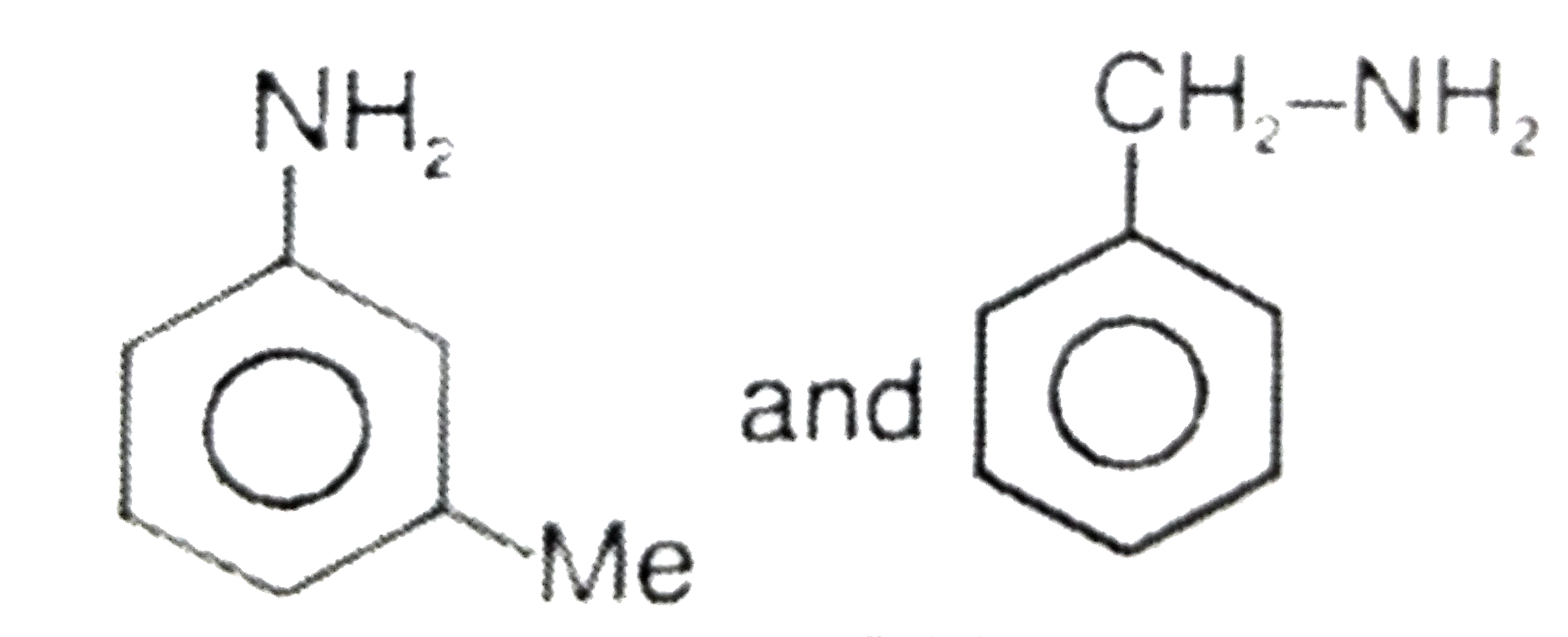Acetamide any and ethy1 amine can distinguished by reacting with .
aq. HCl and heat
aq. NaOH and heat
acidified KMnO4
bromine water
The correct Answer is:B
To distinguish between acetamide and ethylamine, we can use the following steps:
Step 1: Identify the Compounds
- Acetamide: The structure is CH₃C(=O)NH₂, which is an amide.
- Ethylamine: The structure is C₂H₅NH₂, which is a primary amine.
Step 2: Choose the Reagent
We will use aqueous NaOH and heat as our reagent to distinguish between the two compounds.
Step 3: React Acetamide with Aqueous NaOH and Heat
- When acetamide (CH₃C(=O)NH₂) is treated with aqueous NaOH and heated, it undergoes hydrolysis.
- The reaction produces sodium acetate (CH₃COONa) and ammonia gas (NH₃):
CH3C(=O)NH2+H2O+NaOH→CH3COONa+NH3(g)
- The release of ammonia gas is a significant indicator.
Step 4: React Ethylamine with Aqueous NaOH and Heat
- When ethylamine (C₂H₅NH₂) is treated with aqueous NaOH and heated, there is no significant reaction:
C2H5NH2+NaOH+H2O→No Reaction
- Ethylamine does not produce any identifiable product or gas.
Step 5: Conclusion
- The reaction of acetamide produces ammonia gas, which can be detected, while ethylamine does not react under the same conditions.
- Therefore, we can conclude that acetamide and ethylamine can be distinguished by reacting with aqueous NaOH and heat.
Final Answer
The correct option to distinguish between acetamide and ethylamine is aqueous NaOH and heat.
---
- Acetamide: The structure is CH₃C(=O)NH₂, which is an amide.
- Ethylamine: The structure is C₂H₅NH₂, which is a primary amine.
We will use aqueous NaOH and heat as our reagent to distinguish between the two compounds.
- When acetamide (CH₃C(=O)NH₂) is treated with aqueous NaOH and heated, it undergoes hydrolysis.
- The reaction produces sodium acetate (CH₃COONa) and ammonia gas (NH₃):
CH3C(=O)NH2+H2O+NaOH→CH3COONa+NH3(g)
- The release of ammonia gas is a significant indicator.
- When ethylamine (C₂H₅NH₂) is treated with aqueous NaOH and heated, there is no significant reaction:
C2H5NH2+NaOH+H2O→No Reaction
- Ethylamine does not produce any identifiable product or gas.
- The reaction of acetamide produces ammonia gas, which can be detected, while ethylamine does not react under the same conditions.
- Therefore, we can conclude that acetamide and ethylamine can be distinguished by reacting with aqueous NaOH and heat.
The correct option to distinguish between acetamide and ethylamine is aqueous NaOH and heat.
Similar Questions
Knowledge Check
- Question 1 - Select One or More
 can be distinguished byAI2+NaOHBNaSO3HCNaCN/HClD2,4-DNP
can be distinguished byAI2+NaOHBNaSO3HCNaCN/HClD2,4-DNP
Acetaldehyde and acetylene can be distinguished by :
View SolutionPropanal and Acetone can be distinguished by testing with
View SolutionFormic acid and formaldehyde can not be distinguished by treating with
View SolutionPrimary and secondary amines can be distinguished by
View SolutionPrimary and secondary amines are distinguished by :
View SolutionPrimary and secondary amines are distinguished by:
View SolutionPrimary, secondary and tertiary amines cannot be distinguished by the action of
View Solution


 can be distinguish by
can be distinguish by